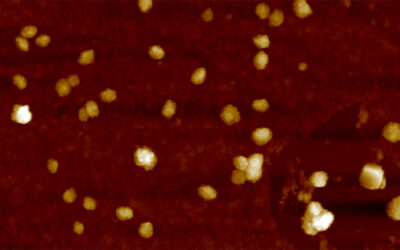Partly due to the rise of drug-resistant pathogens, the occurrence of sepsis has been increasing globally, affecting more than 30 million people each year worldwide. To ensure the best possible treatment for sufferers, rapidly diagnosing sepsis on site in a cost-effective way is crucial.
In Small, Dr. Anna Fàbrega of Universitat Autònoma de Barcelona, Prof. Hatice Altug of École Polytechnique Fédérale de Lausanne, and co-workers develop an affordable point-of-care tool for identifying sepsis.
The unique nanoplasmonic imaging mechanism is based on gold nanoparticles (Au-NPs) binding to a plasmonic gold nanohole array (NHA), which enables the quantification of individual molecule binding on the sensor surface. This technology is used to detect two sepsis-related biomarkers, procalcitonin (PCT) and C-reactive protein (CRP), directly from blood serum.
“The single step bioassay is rapid as it is performed without washing and enables robust detection of a very low concentration of biomarkers, irrespective of their size,” said Alexander Belushkin, the paper’s lead author.
“Most importantly, the imager is made of low-cost, off-the-shelf optical components, and its small size enables operation in on-site clinical settings. The sensor chips are also produced in a scalable, cost-effective process and the reagents can be stored stably over weeks,” he added.
The portable device was deployed in a hospital, where it was shown to provide equivalent performance to gold-standard laboratory assays in blinded tests. Moreover, the identification of PCT levels can be performed in less than 15 minutes, which is significantly faster than conventional laboratory immunoassays.
To learn more about this affordable point-of-care tool for managing acute inflammatory conditions, please visit the Small homepage.

















